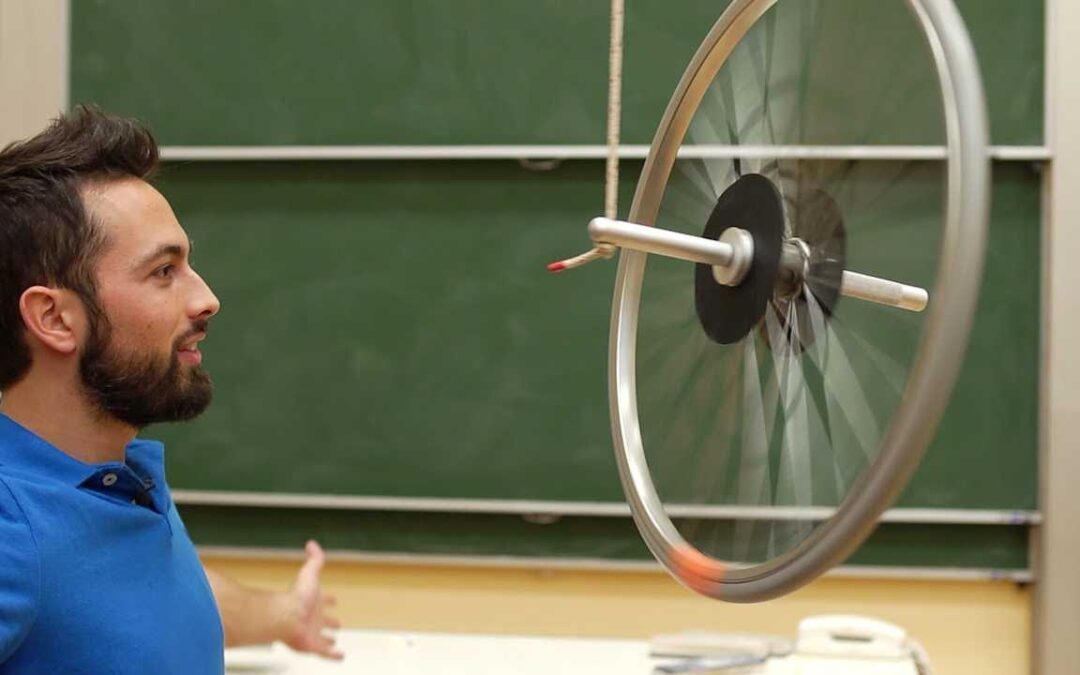Hi I'm Derek and I've been following Destin's series on Smarter about helicopters and the Gyroscopic Precession thing in the film is one of those things that's been on my mind so I come to mine The University of Sydney, my alma mater, has come to borrow some equipment to explain gyroscopic precession to you . First I'll talk about vectors. A vector consists of a force that has magnitude and direction. For example, momentum and force are a type of vector. Both of the above are common vectors. If I have a moving car, he has momentum in the direction he is going, and if I put a force on a car and its momentum changes.
For example, if I push the car to the right, I increase the momentum to the right . The same is true for a rotating body. The angular momentum increases in the direction of the moment. When I apply a downward force on the wheel on this side, I create a moment, moment = force * distance, you can temporarily call it R so it is also applied force * applied force The distance between the point and the axis of rotation. Where is the direction of the moment now? We usually use the right-hand rule to distinguish its direction, and turn the four fingers in the direction of the rotation, which is the direction of the angular momentum. So the moment is actually in this direction, which is perpendicular to the applied force, and the applied force is downward. But the moment vector is actually in this direction, so the angular momentum of the wheel is increasing in this direction. So when I make the downward moment The bigger I make the moment in that direction more so I make this wheel have a super angular momentum towards the camera before I go on I will talk about my hands and feet on the wheel this time I suspend one side of the wheel with a rope stand up.
If I let go now there is actually a moment in the wheel system because the wheel has gravity and there is some distance between the wheel and the axis of rotation of the rope so if I let go now it will swing back and forth as you would expect , but I want to explain in terms of rotational motion that he actually has a moment pointed in this direction and the angular momentum in this direction increases and finally the angular momentum in this direction makes the whole wheel start to swing counterclockwise but if I rotate the wheel What happens when you let go after that? In this case the wheel already has an angular momentum in that direction before you let go, so the moment in that direction when you let go will actually cause the wheel's angular momentum to spin in this way , now let's try it and see if it doesn't work (going on) Look at him he is moving in the way we expect! His angular momentum is in this direction, but the moment is exerting force in this direction so when The angular momentum starts to spin when the two of them are together but she doesn't last very long because the friction of the wheel is very, very high remember to watch Destin's other helicopter videos and then come back to my channel Veritasium Check out more fun videos like this one except I don't usually need to dodge the wheels like I do now

